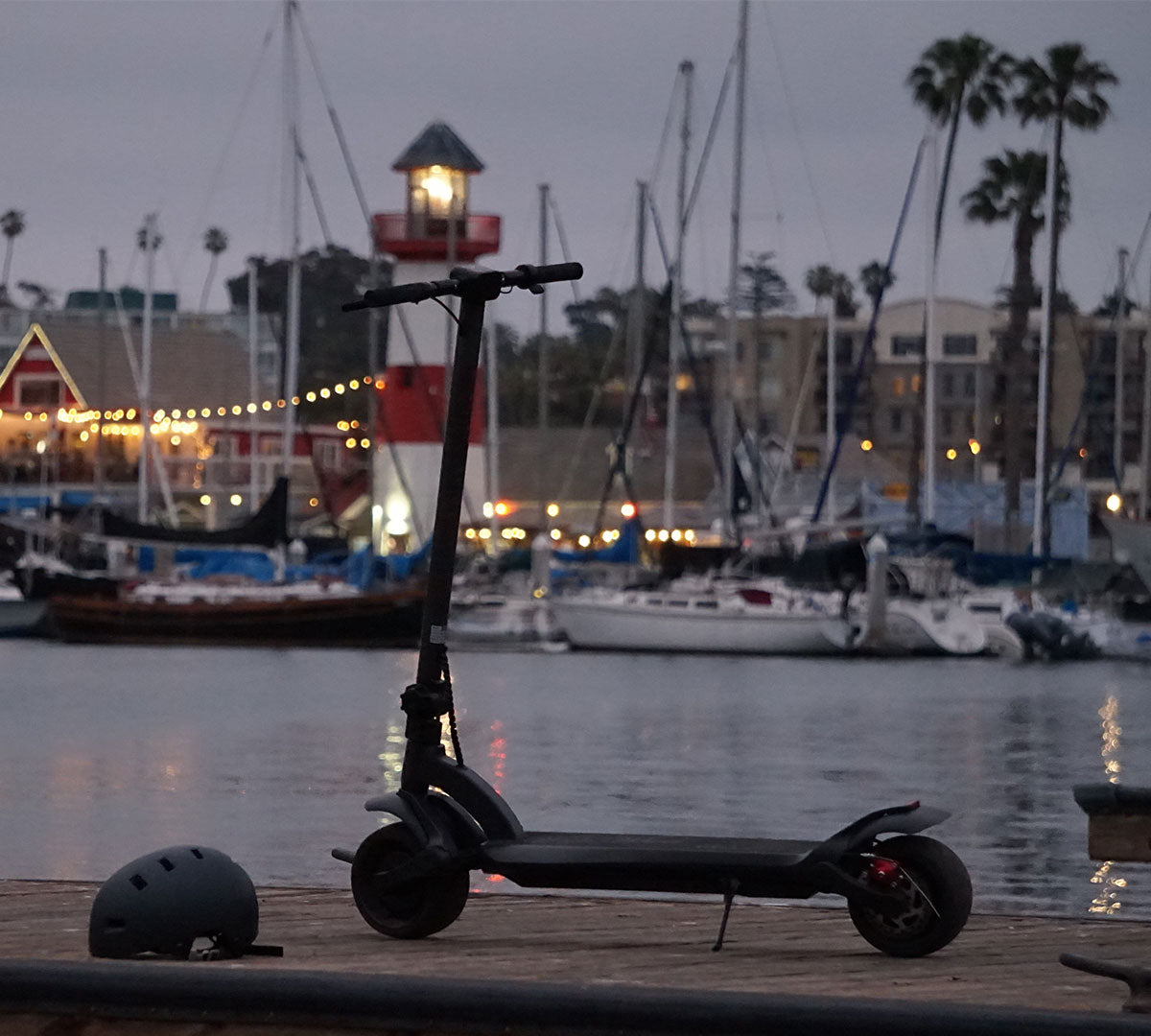Are Electric Vehicles Better For The Environment?
- Read Time: 13 min
Even though no greenhouse gas emissions come directly from electric vehicles in use, they do run on electricity still produced from fossil fuels in large parts of the world. One must also remember that the manufacturing processes use a lot of energy, particularly when it comes to the battery.

How Electric Vehicles Help To Tackle Climate Change

The debate and argument over EV:s carbon emissions status is still ongoing and facts are being published enough to confuse even the most receptive of minds.
Some consensus seems to be agreed upon, however, and below we detail some of those findings.
- Over the span of a lifetime, electric vehicles produce considerably lower carbon emissions than conventional internal combustion engines.
- The benefit of electric vehicles is smaller in countries with coal intensive electricity production and their total emissions are more to be compared with hybrid electric vehicles.
- When (and if) countries decarbonize their generation of electricity to meet the climate targets, there will be a drop in emissions from existing electric vehicles on the road, and manufacturing emissions will also drop.
- Research done in the UK in 2019, showed that lifetime emissions per kilometer for a Nissan Leaf were approximately three times lower than compared to similar conventional vehicles. This was before accounting for the drop in carbon intensity of electricity produced in the car's lifetime.
- Comparing electric and conventional vehicles is tricky and complex. Depending on the size of the vehicle, how accurately fuel economy is estimated, the calculations of emissions from electricity produced, style of driving and driving patterns as well as the weather in the area the vehicles operate in, are all factors to be considered and calculated with. Many estimates are to be taken into account.
Different Studies Find Different Results
Depending on your source and maybe even, what you are looking for, there are big uncertainties associated with the emissions connected to battery production as well as tailpipe emissions itself. Different studies produce greatly different results and numbers. In the words of British economist Ronald H Coase "If you torture the data enough it will eventually admit", seems to apply here.
Regardless, some facts are indisputable. One thing for certain is that as the battery production process improves and with that a drop in prices, and as electric vehicle manufacturers include ever bigger batteries with longer ranges, the carbon emissions footprint from that process might have a larger impact on the climate benefits of electric vehicles.
As it stands today, approximately half of the emissions from battery manufacture come from the electricity needed for that process. Relocating the production to places with low carbon electricity footprint or to plants with renewable energy sources could substantially reduce emissions.
The debate was very evident when in 2019, a group of German researchers at the Institute for Economic Research stated that "electric vehicles will barely help cut CO2 emissions in Germany over the coming years”. The study suggested that in Germany, " the CO2 emissions of battery-electric vehicles are, in the best case, slightly higher than those of a diesel engine”.
This article was picked up by international media and received pushback from the EV side of things. Some researchers rebutted the claim.
Other electric car studies in Germany have reached direct opposite conclusions claiming that emissions from electric vehicles are up to 43% lower than that of diesel vehicles. Another study stated that “in all cases examined, electric cars have lower lifetime climate impacts than those with internal combustion engines”.
Who to believe? Not so easy to say as these varying reports and studies arise from assumptions by the researchers. And everybody does not assume the same things, do they?
For instance, when trying to calculate the ev emissions compared to regular cars and conclude which technology is the winner as far as lower emissions go, will depend on a lot of various factors. Some of these include what specific type of vehicle was being compared, type of driving patterns, weather, which type of grid electricity mix is in place, and also if marginal or average electricity emissions are being calculated.
Marginal or average emissions are not something most are familiar with so let's explain the difference as simply as possible. Electric vehicles need to be charged and that electricity must come from somewhere.
The electricity produced and available today is calculated as average emission. We know where it comes from and how much greenhouse gases it produces. Marginal emissions are important when examining new types of power plants that will be deployed to meet the greater demand to be added on top of the already existing grid.
The marginal emissions factor is extremely important when calculating how the demand from thousands or millions of new EVs will be met. And this is data that no one can know for sure, thus one has to assume.
To get as close as possible to the truth and to know how much emissions the electric car or other ev impacts today's grid, the average emissions intensity needs to be used.
Large Differences in Battery Emissions

Many estimates and analyses on life cycle battery emissions rely on a 2017 study made by the Swedish Environmental Research Institute (IVL). This was a study that examined other studies published between 2010-2016 and in so concluded that battery manufacturing emissions are likely between 150 and 200 kg CO2-equivalent per kWh of battery capacity.
However, this study came under heavy criticism as it only looked at battery production in Asia rather than Europe or US.
The study was substantially revised in 2019 with researchers now concluding that emissions from battery manufacturing are actually between 61 and 106 kg CO2-equivalent per kWh with an upper level of 146 kg. The relatively low 61 kg relates to zero carbon source battery manufacturing. IVL claimed that the revised study was needed due to new data related to cell production.
There are many lifecycle emissions studies published in recent years and most if not all, show smaller emission numbers than that of the original IVL study. They are more similar to the revised 2019 study. One reason for varying numbers is that manufacturing emissions are generally higher in Asia than in Europe or US. Not at all surprising as the use of coal for producing electricity is still widespread in this part of the world. Comparing Asia to Europe and the US in this regard shows a 20% lower emissions result.
Some studies brake down emissions into various segments such as mining, refining, various off-site productions, and the actual process where the battery assembling takes place. These cases will typically show that approximately half of the lifecycle emissions come from material production off-site and the other half, from electricity used in the actual manufacturing process.
Are Electric Cars Better For The Environment?
It's hard to argue against the immediate benefit of air quality that electric vehicles would have in cities and other densely populated areas. Zero tailpipe emissions mean zero emissions when driving. This would mean better air quality and cleaner cities.
Producing electric cars does however require a lot of energy due to the necessary manufacture of lithium-ion batteries. The argument and overall professional opinion is that even if that is the case, the reduction in emissions over the car's lifetime still makes the electric car greener. More than a third of the CO2 emissions created during an electric car's lifetime come from the manufacturing process itself. This number is expected to be reduced as technology advances and new methods will emerge.
What Are EVs, And How Do They Work?

EV is short for electric vehicle.
These fall into mainly three categories.
- Battery electric vehicles. A fully electric vehicle powered by electricity stored in a battery pack.
- Plug in hybrids that combine either a gasoline or diesel engine with an electric motor and a rechargeable battery pack.
- Fuel cell vehicles. These are powered by hydrogen splitting electrons to produce electricity. More efficient than an internal combustion engine and with zero tailpipe emissions.
The power in an EV thus comes from a battery pack which in this case is equivalent to the gas tank in a regular car. This power is then transmitted to a motor which is usually connected directly to the wheels.












